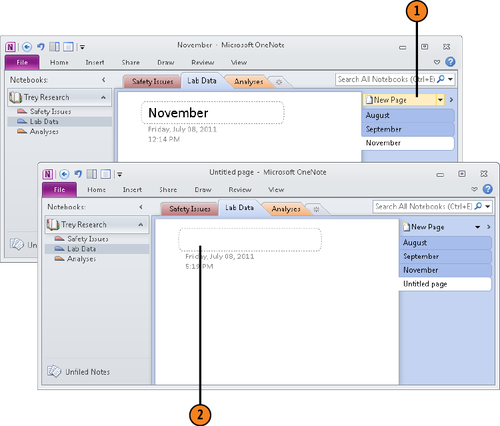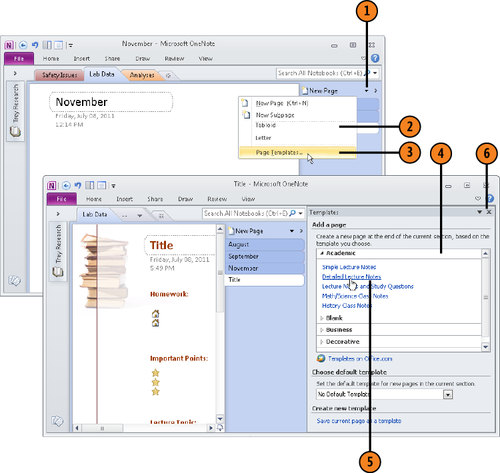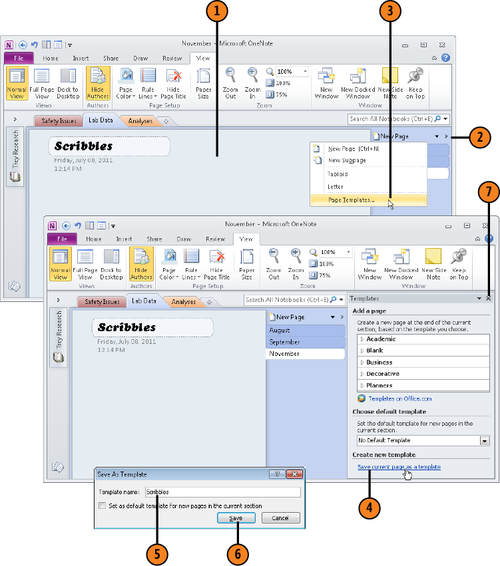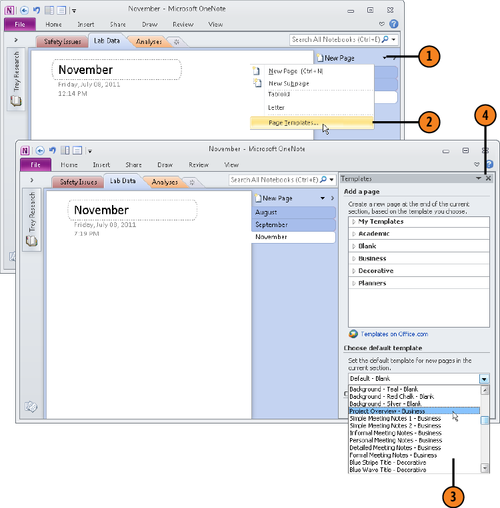Notes are written and kept on pages.
The name of the page that is currently open appears in the title bar at
the top of the OneNote screen, at the top of the page itself, and in
the page tabs. Each page also lists the date and time it was created.
OneNote offers these techniques to create a page:
Click the New Page button (or press Ctrl+N) to create a new page at the end of the currently open section. The New Page button is located at the top of the page tabs.
In the page tabs, right-click the page you want the new page to go after, and choose New Page.
Open
the New Page gallery and choose a template, or select Page Templates to
open the Templates task pane and choose a template there.
After you create a page, enter
its name in the page title box. You can change a page’s name at any time
by changing the name in the page title box.
To reorder pages in a section, select a page in the pages tab and drag it up or down.
You can create your own page
templates as well as use the templates that come with OneNote. In the
Templates task pane, templates you create are in the My Templates
category.
Pages you create with the New
Page command are made with the Default – Blank template. However, you
can choose a different template as the default for pages in each
section.
1. Create a Page
Click the New Page button.
Enter a name in the page title box.

2. Create a Page from a Template
Open the gallery on the New Page button.
Notice the templates on the gallery (you can choose a template here to create a page).
In the Templates task pane, click an Expand button to view the templates in a category.
Click
a template name and glance at the new page to see whether you like the
template (you can choose a different template if you don’t like the one
you choose).
Click the Close button to close the task pane.

3. Create a Page Template
Create a page serving as the model for the template with text, font, page color, and other specifications.
Open the gallery on the New Page button.
In the Templates task pane, click Save Current Page as a Template.
In the Save As Template dialog box, enter a name for the template.
Click Close to close the Templates task pane.

Note:
Try This!
Create a new page with the
template you created. Open the gallery on the New Page button and choose
Page Templates. In the Templates task pane, open the My Templates
category and click your template’s name.
4. Choose the Default Page Template for Section Pages
Open the gallery on the New Page button.
In the Templates task pane, open the Choose Default Template menu and select a template.
Click the Close button to close the Templates task pane.

Tip:
The page template that
OneNote uses is called Default – Blank. To go back to using this
template, choose it in the Templates task pane.